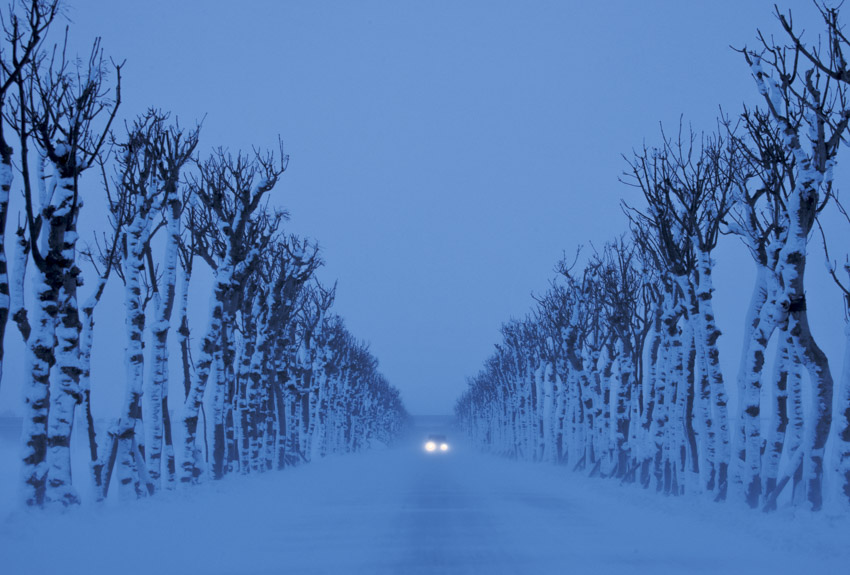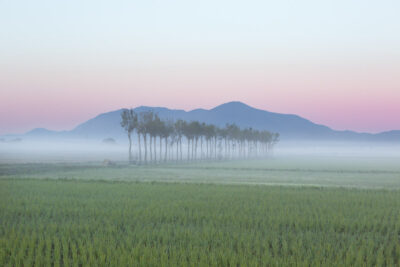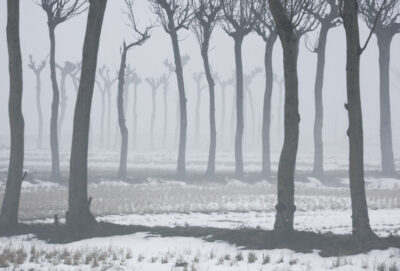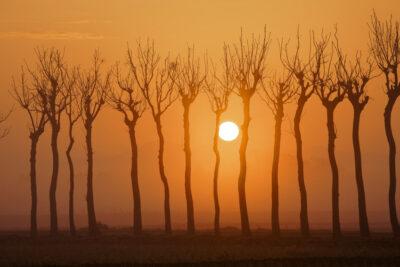
満願寺
「・・・満願寺の稲架木並木は、昭和18(1943)年から20(1945)年にかけて同地区の水田約250ヘクタ-ルを区画整理したときに26軒の関係農家が協力して各地の稲架木をこの農道へ移植したものです。農業の機械化が進み、籾(もみ)の機械乾燥が広く普及して県内各地の稲架場が次々と姿を消していく中で、同地区は種籾採取の指定を受け、良質の種籾を取るために自然乾燥に必要な稲架場として残されました。指定が解除された後も、所有者と農家組合が協力して稲架木の保存に努め、新津の風物詩として今日にいたっています。」・・・以上新潟観光ナビサイトより。
移植したとしても、稲を干すために使用しているので役割通りハザ木と言えます。一方中之口の門田にあるハザ木の並木は同じように道路脇の歩道との間に街路樹のように移植されています。ところどころに街路灯も設置されていて、見る影もありません。既にハザ木の役割もなく手入れもされていないのでハザ木とは言えないのではないでしょうか。
満願寺においては、かつて磐越道の工事を進める際、並木を分断する形で勝手に伐採し工事を進めたらしく、批判を浴びていたのをよく覚えています。風景や文化的歴史的な景観に対する意識の問題ですね。時と共に新潟らしい風景が失われゆくのは時代の流れだけれど、それを活かした開発のデザインが求められています。失ってからでは遅いです。
The rice rack trees of Mangonji Temple were transplanted to this farm road by 26 farmers in the area between 1943 and 1945, when approximately 250 hectares of rice fields in the region were reorganized. As agricultural mechanization advanced and mechanical drying of rice grains became widespread, rice drying fields across the prefecture began to disappear one after another. However, this area was designated for seed rice collection, and the rice drying fields were preserved as necessary for natural drying to produce high-quality seed rice. Even after the designation was lifted, the owners and farmers’ association worked together to preserve the rice drying poles, and they remain as a local landmark of Niitsu to this day.” …The above is from the Niigata Tourism Navigation website.
Even if transplanted, they are still used for drying rice, so they can be called haza trees. On the other hand, the haza trees in the gate field of Nakano-guchi have been transplanted between the roadside and the sidewalk like street trees. Streetlights have been installed here and there, and they no longer resemble their original form. Since they no longer serve their original purpose and are not maintained, can they still be called haza trees?
At Man’en-ji Temple, I clearly remember that during the construction of the Ban’etsu Expressway, the trees were arbitrarily cut down to divide the row, drawing criticism. This highlights the issue of awareness regarding landscapes and cultural-historical scenery. While the loss of Niigata’s distinctive landscapes over time is part of the flow of history, there is a need for development designs that utilize them. It’s too late once they’re gone.
Translated with DeepL.com (free version)
EOS1DsMarkⅡ 90mm 1/50秒 f:9
©️photo by Nakamura Osamu



